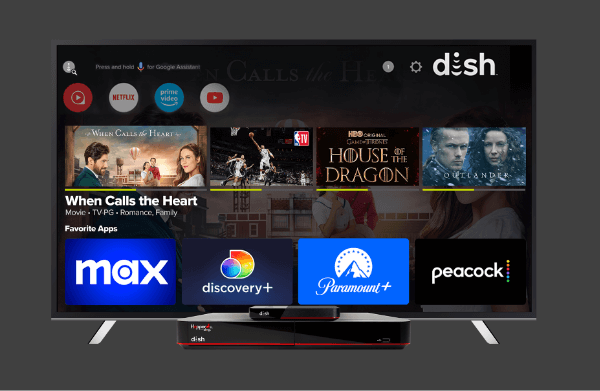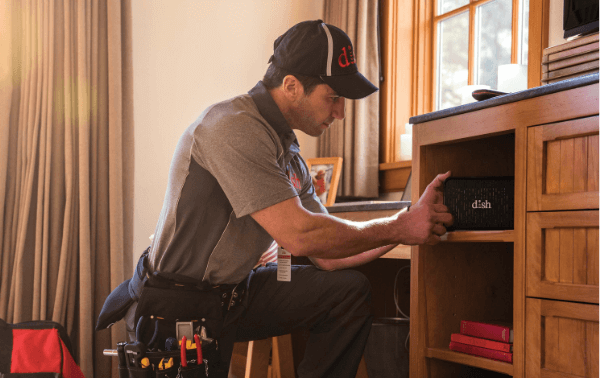Decoding Router Specs: What the Numbers and Letters Actually Mean
Table of Contents
When shopping for a new router, you’re likely to encounter a dizzying array of specifications with cryptic numbers and letters. Router specs can seem like an alien language at first glance—what exactly does “AX3000" or “Wi-Fi 6" actually mean?
Getting a handle on these specs is key to picking the right router for your needs—whether you’re just browsing, streaming your favorite shows, or diving into intense gaming sessions.
Understanding Wi-Fi Generations
The letters in router model numbers are far from random—they actually tell you which Wi-Fi generation the device supports, which directly impacts performance and capabilities. Let’s get into some router specs, explained in a way that anyone can understand.
The Evolution of Wi-Fi Standards
Wi-Fi has evolved through several frequencies and generations, each bringing significant improvements:
- Wi-Fi 4 (802.11n): Older standard supporting speeds up to 450 Mbps
- Wi-Fi 5 (802.11ac): Designated by “AC" in router names, supporting speeds from 200 Mbps to 1.73 Gbps
- Wi-Fi 6 (802.11ax): Marked by “AX" in router names, with speeds from 143 Mbps to 2.4 Gbps
- Wi-Fi 6E: Often indicated by “AXE" (though this is unofficial), extends Wi-Fi 6 into the 6 GHz band
- Wi-Fi 7 (802.11be): Still emerging, will be indicated by “BE" in future router models
For most current home use, Wi-Fi 5 (AC) or Wi-Fi 6 (AX) routers provide excellent performance. If you’re upgrading in 2025, Wi-Fi 6 offers significant benefits including better handling of multiple devices, improved battery life for connected devices, and enhanced performance in congested environments.
Deciphering Speed Ratings

Getting up to speed
The numerical portion of router specs (like AC1900 or AX3000) represents the theoretical maximum speed, but there’s more to these numbers than meets the eye.
What Router Speed Numbers Actually Mean
The number after the Wi-Fi generation letters indicates the total theoretical maximum throughput across all the router’s bands, measured in megabits per second (Mbps) [1]. For example:
- AC1900: A Wi-Fi 5 router with maximum theoretical speeds of 1900 Mbps (1.9 Gbps)
- AX3000: A Wi-Fi 6 router with maximum theoretical speeds of 3000 Mbps (3.0 Gbps)
It’s important to understand that these speeds represent the combined maximum across all bands under perfect laboratory conditions. No single device will ever achieve these speeds in real-world use.
Breaking Down Multi-Band Speeds
Routers divide their total bandwidth across multiple frequency bands. For example, an AC3200 [2] router might distribute its speed as:
- 600 Mbps on the 2.4 GHz band
- 1300 Mbps on one 5 GHz band
- 1300 Mbps on a second 5 GHz band
This setup allows multiple devices to connect simultaneously across different bands, optimizing overall network performance rather than maximizing speed for a single device.
Dual-Band vs. Tri-Band Routers
Router specs often highlight whether a device is dual-band or tri-band, which indicates how many separate networks the router can create.
Understanding Frequency Bands
Router frequency bands determine range and speed characteristics:
- 2.4 GHz band: Offers greater range but slower speeds, better at getting through walls and obstacles
- 5 GHz band: Provides faster speeds but shorter range, ideal for devices in the same room as the router
Choosing Between Dual-Band and Tri-Band
- Dual-band routers utilize 2.4 GHz and 5 GHz frequencies, allowing you to connect older devices to the 2.4 GHz band while newer devices benefit from the faster 5 GHz band.
- Tri-band routers add a second 5 GHz band, creating three separate networks (one 2.4 GHz and two 5 GHz). This is particularly beneficial in households with many connected devices, as it reduces congestion and provides more dedicated bandwidth.
For homes with multiple high-bandwidth users streaming, gaming, or video conferencing simultaneously, a tri-band router can significantly improve the experience by reducing network congestion.
Router Specs for Gaming: What Really Matters
Gamers have unique networking needs, with priorities centered around stability, low latency, and consistent performance rather than just raw speed.
Key Gaming Router Specifications
When evaluating router specs for gaming, look for:
- Low latency features: Gaming routers often include QoS (Quality of Service) that prioritizes gaming traffic to reduce lag.
- MU-MIMO support: This technology (Multi-User, Multiple-Input, Multiple-Output) allows the router to communicate with multiple devices simultaneously rather than sequentially, reducing wait time and improving performance during competitive gaming.
- Wired connectivity options: While wireless has improved, serious gamers should look for routers with multiple gigabit Ethernet ports for the most stable connection.
- Processor and RAM: Gaming routers typically feature more powerful processors and additional RAM to handle multiple simultaneous connections without performance degradation.
- Band steering: This feature automatically moves devices between bands to optimize performance based on current network conditions.
For serious gamers, router specs should emphasize these performance features over flashy marketing numbers.
Mesh Network Systems: Explained

Do you need a mesh network?
For larger homes or buildings with connectivity challenges, mesh network systems have become increasingly popular.
What Is a Mesh Network?
Unlike regular routers that send out a signal from one spot, mesh systems use several nodes spread around your home to create a single network with reliable coverage everywhere. When you see “mesh" in router specs, it indicates the device is designed to work as part of such a distributed system.
Benefits of Mesh Networks
- Eliminates dead zones in larger homes
- Provides seamless roaming between nodes without disconnecting
- Often offers simplified setup and management through user-friendly apps
- Easily expandable by adding more nodes as needed
Mesh systems typically cost more than traditional routers but can be well worth the investment for homes larger than 2,000 square feet or with unusual layouts that create Wi-Fi challenges.
Advanced Router Specifications
Beyond the basics, several advanced router specs can make a significant difference in performance for specific use cases.
MU-MIMO (Multi-User, Multiple-Input, Multiple-Output)
This technology enables routers to communicate with multiple devices simultaneously rather than sequentially. Router specs that highlight MU-MIMO [3] capabilities are especially beneficial in households with many connected devices.
Beamforming
Rather than broadcasting signals equally in all directions, beamforming technology directs stronger signals toward specific devices, improving both range and performance. This feature is particularly helpful for reaching devices in distant rooms. [4]
Processor Speed and RAM
Just like computers, routers have processors and memory that affect performance. Router specs that list dual-core or quad-core processors and substantial RAM (typically 256MB to 1GB) indicate devices better equipped to handle many simultaneous connections.
Making Sense of Router Specs When Shopping

Which router is right for you?
With all these specifications in mind, how do you make a practical decision when buying a router?
Tips for Evaluating Router Specs
- Consider your internet service speed: There’s no benefit to buying a router capable of speeds far beyond what your internet service provides.
- Count your devices: Households with many connected devices benefit more from tri-band routers and MU-MIMO technology than from higher theoretical speed numbers.
- Evaluate your space: Larger homes or homes with unusual layouts may benefit more from mesh systems than from a single high-performance router.
- Prioritize your activities: Gamers should focus on gaming-specific features like QoS and wired connectivity, while households that primarily stream video might prioritize band steering and overall coverage.
- Future-proof within reason: While it’s smart to buy technology that will last, the most expensive cutting-edge router isn’t necessary for most households.
Choosing the Right Router for Your Home
Understanding router specs doesn’t require an engineering degree, just knowledge of what the key numbers and letters actually mean for real-world performance. By focusing on the specifications that matter most for your specific needs, you can make an informed choice that balances performance and value.
The good news is that router technology continues to improve, with each generation offering better performance, more features, and greater reliability. Whether you’re seeking a router for everyday use or specialized gaming needs, knowing how to decode router specs empowers you to make the best choice for your connected home.
Sources
[1] PC Mag. “What Do Those ‘AX’ and ‘AXE’ Numbers on Your Wi-Fi Router Mean?"
[2] NetGear. “Nighthawk X6 AC3200 Tri-Band WiFi Router Model R8000 User Manual."
[4] MathWorks. “What Is Beamforming?"






 Call
Call 

 Access Your Account
Access Your Account